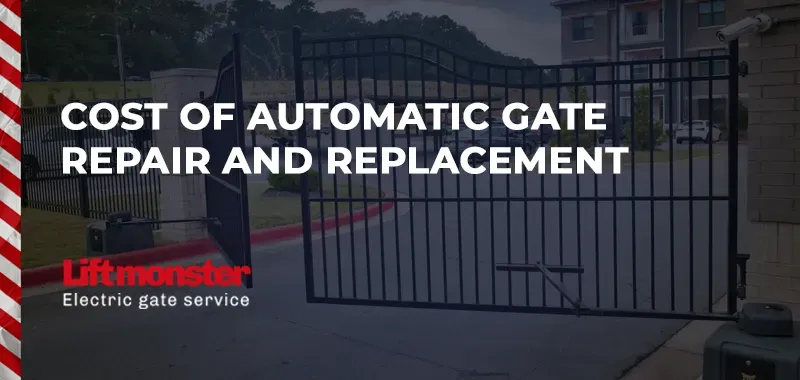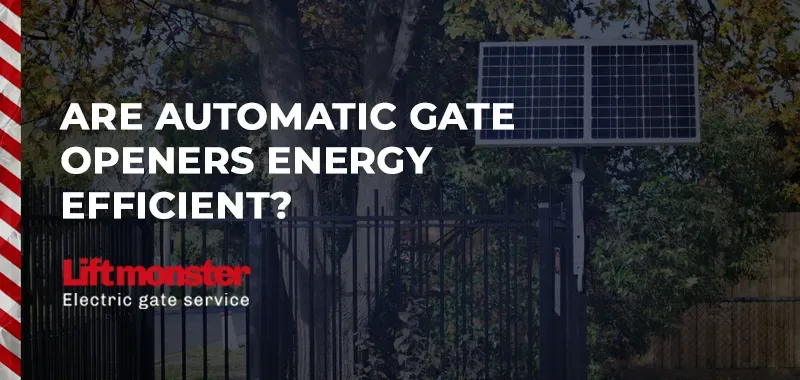How to Avoid Preventable Gate Issues?
A gate is more than just an entry point—it provides security, convenience, and enhances the aesthetics of your property. However, like any mechanical system, a gate can develop problems over time. Many of these issues are preventable with proper maintenance and care.
At Lift Monster, we specialize in installing, repairing, and maintaining gates, ensuring they function efficiently for years. In this guide, we’ll discuss common gate problems, why they occur, and the best ways to prevent them.
Common Preventable Gate Issues and How to Avoid Them
Understanding the most frequent gate problems can help you take proactive steps to keep your gate in excellent condition. Here are the top preventable gate issues and how to avoid them:
1. Misaligned or Stuck Gate
A gate that doesn’t open or close properly is often caused by misalignment, dirt buildup, or obstructions in the track.
Prevention Tips:
- Regularly inspect the track for debris and clean it to ensure smooth operation.
- Check for loose or bent hinges that may cause alignment issues.
- If your gate is motorized, ensure the motor and gears are functioning correctly.
2. Rust and Corrosion
Rust is a major issue for metal gates, especially in humid or coastal environments. Once rust forms, it can weaken the structure and affect functionality.
Prevention Tips:
- Apply a rust-resistant coating or paint to metal gates to prevent corrosion.
- Regularly clean the gate and remove any dirt or moisture buildup.
- Inspect for early signs of rust and address them immediately by sanding and repainting affected areas.
3. Electrical and Automation Failures
Automatic gates rely on sensors, motors, and control boards, which can fail due to electrical issues or wear and tear.
Prevention Tips:
- Test the gate sensors regularly to ensure they are working properly.
- Keep the control panel clean and dry to prevent electrical malfunctions.
- Schedule routine maintenance with a professional to check the gate motor and wiring.
4. Gate Sagging or Drooping
A gate that sags can become difficult to open and close. This often happens due to loose hinges, a weak frame, or improper installation.
Prevention Tips:
- Ensure your gate is installed with strong, high-quality hinges and support posts.
- Tighten any loose bolts or screws on the hinges.
- If sagging persists, install additional support or adjust the hinges.
5. Slow or Noisy Gate Movement
A gate that moves slowly or makes excessive noise may have lubrication issues, worn-out rollers, or a failing motor.
Prevention Tips:
- Lubricate all moving parts, including hinges, rollers, and chains, at least twice a year.
- Replace old or worn-out rollers and bearings.
- If the motor struggles, have it inspected and serviced by a professional.
6. Remote Control or Keypad Malfunctions
For automated gates, a faulty remote or keypad can prevent access. This could be due to dead batteries, signal interference, or a wiring issue.
Prevention Tips:
- Replace remote batteries regularly to avoid unexpected failures.
- Keep the keypad clean and protected from weather exposure.
- Reset or reprogram the remote if connectivity issues arise.
7. Pest and Rodent Damage
Rodents and insects can cause damage by chewing on gate wiring or nesting in control panels.
Prevention Tips:
- Seal any small openings around the control box to prevent pests from entering.
- Use rodent-repellent solutions around the gate area.
- Regularly check for signs of pest damage and repair affected components.
Routine Maintenance for a Trouble-Free Gate
To prevent gate issues and extend its lifespan, follow these maintenance steps:
✅
Inspect the Gate Weekly – Look for signs of wear, rust, or misalignment.
✅
Lubricate Moving Parts – Apply high-quality grease to hinges, chains, and rollers.
✅
Check Electrical Components – Test sensors, motors, and remotes for proper functionality.
✅
Keep the Area Clean – Remove debris from the tracks and ensure the surrounding area is clear.
✅
Schedule Professional Servicing – An expert inspection at least once a year helps catch potential problems early.











